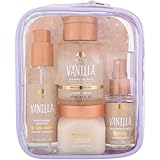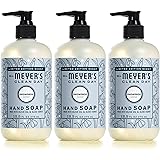The quest for an exquisite fragrance without the designer price tag is a common pursuit among perfume enthusiasts. The concept of “dupes,” or scent-alikes, has gained considerable traction as consumers seek affordable alternatives that capture the essence of high-end perfumes. This movement is often highlighted in fragrance communities, where comparisons are eagerly awaited and discussed.
As explored in the video above, Bath & Body Works has become a prominent player in the dupe market, with many of its body mists and lotions being suggested as affordable stand-ins for luxury scents. The effectiveness of these Bath & Body Works dupes is frequently debated, prompting detailed reviews and comparisons to ascertain their accuracy.
Understanding the Allure of Perfume Dupes
A significant portion of the fragrance market is driven by the desire for luxury scents, which often come with a premium price tag. For many individuals, spending hundreds of dollars on a single bottle of perfume is simply not feasible. Consequently, the demand for high-quality, budget-friendly alternatives has steadily increased.
Perfume dupes are created to mimic the scent profile of more expensive, popular fragrances, making designer-inspired aromas accessible to a broader audience. These alternatives allow consumers to enjoy similar olfactory experiences without the substantial financial investment, fostering a sense of luxury for less.
What Makes a Fragrance a “Dupe”?
The term “dupe” typically refers to a product that is considerably cheaper than an original item but offers a very similar experience or aesthetic. In the context of perfumery, a dupe is a fragrance that closely resembles the scent of another, usually more expensive, perfume. It is important to distinguish between a dupe and a counterfeit; dupes are legally sold under their own branding, while counterfeits attempt to pass themselves off as the original product.
The creation of a dupe often involves perfumers analyzing the scent notes and composition of a popular fragrance. Ingredients are then carefully selected and blended to achieve a comparable aroma. While an exact 100% match is rare due to proprietary formulas and raw material sourcing, some dupes are remarkably close, as demonstrated in various fragrance reviews.
Deep Dive: Bath & Body Works Dupes Under the Magnifying Glass
The video provides a direct, side-by-side comparison of specific Bath & Body Works fragrances against their alleged designer counterparts. Such detailed evaluations are invaluable for those considering a purchase, as personal testing can often be subjective and time-consuming. The findings from these comparisons can guide consumers in making informed decisions about their fragrance choices.
Aqua Hour vs. Aqua di Gioia: A Mismatch in Scent Profiles?
The initial comparison featured Aqua Hour from Bath & Body Works, which was presented as a potential dupe for Giorgio Armani’s Aqua di Gioia. Aqua di Gioia is widely recognized for its refreshing, aquatic, and slightly sweet character, often associated with a vibrant citrus opening and a warm, woody base. The Bath & Body Works rendition was described with notes of watery bergamot, fresh peony, and salty cedarwood, suggesting a fresh and invigorating profile.
- Video’s Finding: Despite the suggested similarity, it was determined that Aqua Hour was not an accurate dupe for Aqua di Gioia. A direct comparison revealed a clear divergence in their scent profiles, indicating that the intended replication was unsuccessful.
- Insight: The complexity of aquatic and fresh floral notes can be challenging to perfectly replicate. Even subtle differences in the balance of bergamot, peony, and cedarwood can lead to a distinctly different overall impression from the original, which might contain unique proprietary blends.
Guilty as Fig vs. Father Figure: An Unexpected Olfactory Twin
Next, the spotlight was turned to Guilty as Fig, a Bath & Body Works offering, pitted against Father Figure from Fleur. Fig notes in perfumery are often celebrated for their unique green, creamy, and sometimes woody nuances, offering a sophisticated and earthy aroma. Father Figure is part of a niche collection, suggesting a distinct and possibly less mainstream scent profile.
- Video’s Finding: Surprisingly, Guilty as Fig was identified as an “exact” match for Father Figure. This level of accuracy is highly sought after by dupe hunters, as it signifies a successful and almost indistinguishable scent replication.
- Reviewer’s Take: While the similarity was undeniable, it was mentioned that the scent itself was not a personal favorite for the reviewer. This highlights an important aspect of fragrance; even a perfect dupe might not appeal to everyone’s individual taste.
Madame Mystique vs. Mon Paris Eau de Parfum: Identical Twins in a Bottle?
The final comparison involved Madame Mystique from Bath & Body Works and Yves Saint Laurent’s Mon Paris Eau de Parfum. Mon Paris is a highly popular fragrance, known for its romantic and fruity chypre character, often featuring notes of strawberry, raspberry, datura flower, and patchouli. Its widespread appeal makes it a frequent target for dupe creation.
- Video’s Finding: Without hesitation, Madame Mystique was declared “identical” to Mon Paris Eau de Parfum. This strong affirmation suggests a remarkably close resemblance, making it a compelling option for fans of the designer fragrance looking for a more affordable alternative.
- Popularity Impact: Given the extensive popularity of Mon Paris, finding an identical dupe at a fraction of the cost presents significant value. Such findings are particularly valuable for budget-conscious consumers who wish to enjoy their favorite scents more frequently without financial strain.
The Science Behind Scent Similarities
The ability to create highly accurate perfume dupes is a testament to advancements in fragrance chemistry. Perfumers utilize a vast palette of aroma chemicals, both natural and synthetic, to construct complex scent profiles. Many popular designer fragrances share common molecular structures and ingredient families, which can be identified and recreated.
Through gas chromatography-mass spectrometry (GC-MS) and other analytical techniques, the chemical composition of a fragrance can be broken down. This allows perfumers to understand the key components that give a scent its distinctive character. With this information, alternative formulations can be developed using similar or identical aroma chemicals, often sourced from different suppliers to manage costs.
Factors Influencing a Dupe’s Accuracy
Several elements contribute to how closely a dupe resembles its luxury counterpart. The quality of raw materials plays a crucial role; while a dupe might use similar chemicals, the specific grade or purity can subtly alter the scent’s nuances and longevity. Additionally, the concentration of fragrance oils—expressed as Eau de Toilette, Eau de Parfum, etc.—will affect projection and wear time, which might differ between a dupe and an original.
Furthermore, individual skin chemistry can significantly impact how a fragrance develops and is perceived. A dupe that smells identical on one person might differ slightly on another, just as original perfumes react uniquely to different wearers. This personal interaction with the scent adds another layer of complexity to dupe comparisons.
Maximizing Your Fragrance Budget: Tips for Finding the Best Perfume Dupes
Identifying reliable perfume dupes can be a rewarding endeavor, offering access to beloved scents without the premium price. However, a strategic approach is often required to navigate the vast market of affordable fragrances. Understanding how to effectively test and research potential dupes can save both time and money.
- Test on Skin: Always test a dupe on your own skin. The scent can evolve differently than it does on a blotter or from the bottle due to your body’s unique chemistry.
- Allow for Dry-Down: Fragrances change as they dry down and develop over time. Give a dupe at least 15-30 minutes to settle on your skin before making a final judgment, as the initial top notes can be misleading.
- Read Multiple Reviews: Consult various reviews and comparisons from different sources. If many people agree on a dupe’s accuracy, it is more likely to be a worthwhile purchase.
- Consider Fragrance Families: If you love a particular designer fragrance, explore dupes within the same fragrance family (e.g., floral, gourmand, chypre). This increases the likelihood of finding a similar scent profile, even if it’s not a direct dupe.
The world of fragrance dupes provides a fantastic opportunity for consumers to enjoy a wider array of scents. With careful research and personal testing, it is possible to discover hidden gems that closely mimic designer perfumes. As evidenced by the video’s findings, some Bath & Body Works dupes truly do stand out as remarkable alternatives, proving that luxury-inspired scents can indeed be found at an accessible price point.











